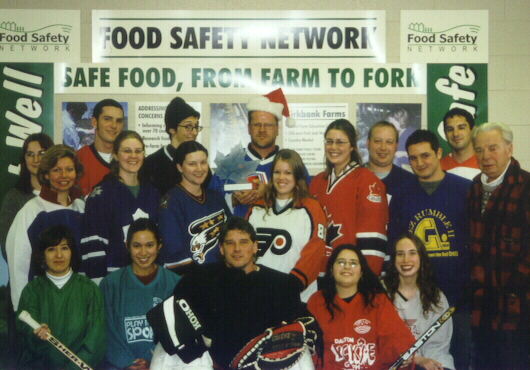How to handle, store and prepare food were the most common questions Canadians had for a national food safety hotline according to new research.
But those results mask the more detailed questions callers often had about how food was produced.
The results, published in the current issue of Food Protection Trends, detail 3,764 telephone inquiries from January 2003 through December 2005 to a national food  safety hotline that was established at the University of Guelph. Other prevalent themes were specific products and brands, food preservation, non-food safety topics and emerging issues.
safety hotline that was established at the University of Guelph. Other prevalent themes were specific products and brands, food preservation, non-food safety topics and emerging issues.
“The call center was a unique contribution to Canadian food safety at the time,” said Dr. Douglas Powell, a professor of food safety at Kansas State University. “But information needs are continually evolving, which is why we publish daily food safety information in the form of an electronic mailing list (bites-l), a blog (barfblog.com) and twitter.
The other authors, Ben Chapman and Sarah Wilson, are both adjunct professors at Kansas State, and the three continue to collaborate on new food safety messages and delivery media.
By collecting data on information needs, an information service whether it’s a call center or social media — can serve as a research tool, revealing information gaps and opportunities to develop or improve resources.The citation is below, as is the original FSN gang (Food Safety Network, circa 2002).
Understanding food safety information needs: using a national information service as a research tool
07.jul.11
Food Protection Trends, Vol. 31, No. 7, Pages 437–445
Sarah Wilson, Benjamin Chapman and Douglas Powell
ABSTRACT
In December 2002, a public information service was launched as a component of the Food Safety Network (FSN) at the University of Guelph. Its core activity was a national toll-free call center through which the Canadian public had direct access to food safety professionals. The call center received 3,764 inquiries from January 2003 through December 2005. Data were collected on call characteristics (day, time and call duration), caller demographics and themes of the inquiries. Analysis determined that inquiries came primarily from individuals identified as consumers and were largely focused on the themes of food storage, handling and preparation. Other prevalent themes were specific products and brands, food preservation, non-food safety topics and emerging issues. Callers obtained the call center’s contact information from a variety of sources, including government, the media, and referrals by food and health professionals. Food safety questions posed by callers varied widely in terms of the topic of concern and the degree of complexity. By collecting data on client information needs, an information service can serve as a research tool, revealing information gaps and opportunities to develop or improve resources. This project provides a blueprint for other organizations seeking to engage the public through an information service.

